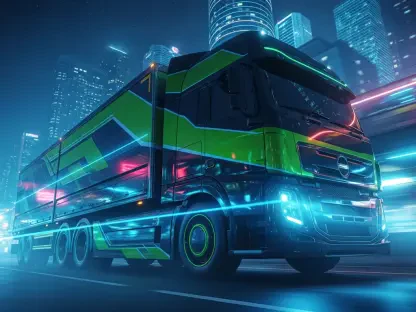As Europe accelerates its push toward a carbon-neutral future, the electrification of transportation, particularly heavy-duty fleets, stands as a cornerstone of this transformation, yet it faces significant hurdles in scalability and infrastructure readiness. The rapid adoption of electric vehicles (EVs), especially in the commercial sector, demands more than just advanced battery technology or vehicle production—it requires a seamless integration with the energy ecosystem. Energy management emerges as a pivotal solution, bridging the gap between growing EV demand and the constraints of grid capacity. By optimizing when and how vehicles charge, aligning with renewable energy availability, and stabilizing power networks, this approach promises to make electric mobility not only viable but also economically attractive. The challenge lies in harnessing market dynamics and innovative technologies to turn these possibilities into widespread reality, ensuring that fleets can operate efficiently while contributing to a greener energy landscape across the continent.
Leveraging Market Dynamics for Cost-Effective Charging
One of the most promising avenues for scaling electric mobility lies in exploiting the fluctuations of electricity prices within Europe’s sophisticated energy markets. Across the region, spot market data consistently reveals windows of low-cost electricity, often during midday hours when solar generation reaches its peak. For heavy-duty fleets, this timing aligns remarkably well with mandatory driver rest periods, offering a practical opportunity to charge at reduced rates. Through accurate forecasting and operational adaptability, fleet operators can strategically plan charging schedules to minimize expenses, achieving some of the lowest costs historically seen. This economic incentive is crucial for encouraging the shift to electric trucks, which are already becoming competitive with their diesel counterparts. Beyond mere savings, this practice highlights how energy management can transform a logistical necessity into a financial advantage, paving the way for broader adoption of EVs in the transport sector while easing the burden on fleet budgets.
Building a Sustainable Energy Ecosystem with Smart Charging
Looking beyond cost, the integration of smart charging technologies offers a deeper synergy between electric mobility and renewable energy, positioning EVs as vital components of grid stability. Electric trucks, often described as “driving batteries,” have the potential to absorb surplus electricity during production highs and curb demand during shortages, effectively balancing the energy network. This capability becomes even more impactful when multiple vehicles are grouped into a balance pool, amplifying their collective effect on grid management. Europe’s advanced energy market further supports this by enabling cross-border electricity trading with minimal loss, driven by price optimization rather than scarcity. Such flexibility ensures access to green, low-cost power from diverse sources like wind farms in Portugal to solar arrays feeding into urban hubs. Reflecting on past efforts, the successful implementation of these strategies demonstrated that systemic integration with renewables was essential, as it not only lowered operational costs for fleets but also contributed to a more resilient and sustainable energy framework across the region.









